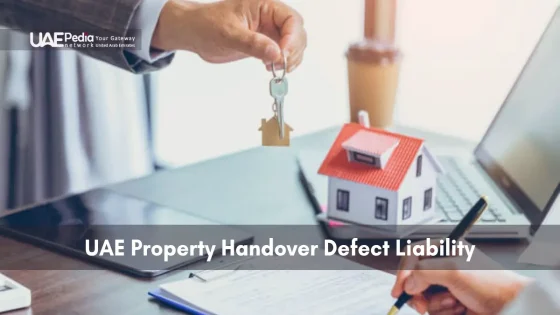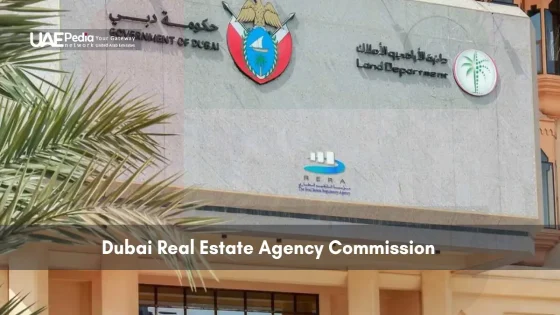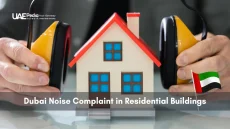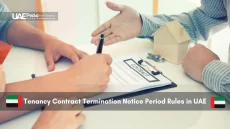What if the key to protecting your new home isn’t in the contract’s fine print but a window of time you might overlook? Across vibrant cities and desert communities, local regulations offer buyers a safety net—one many newcomers discover only after issues arise.
This guide breaks down the critical phase where builders address flaws in recently completed units. Think of it as a warranty period, legally enforced, ensuring your investment meets quality standards. We’ll walk through how it works, why timing matters, and what rights you hold when imperfections surface.
You’ll learn how local laws balance accountability between developers and owners. From cracked tiles to electrical hiccups, understanding this framework helps you advocate for repairs confidently. No jargon, no legalese—just clear steps to safeguard your space.
The defect liability period in UAE property handover begins on the date the completion certificate is issued or keys are delivered, during which developers are contractually and legally obliged to rectify specified faults. Cosmetic defects (e.g., paint chips, loose fixtures) are covered for 12 months, hidden defects (e.g., plumbing leaks, foundation shifts) for up to 5 years, and major structural failures for up to 10 years under UAE Civil Code Article 880 and RERA guidelines. This period operates as an enforceable warranty, aligning construction quality with contractual and regulatory standards.
Property owners must report identified defects in writing—complete with timestamps and photographic evidence—within the stipulated windows (typically within days of discovery) to preserve their rights. Developers must then address defects within defined turnaround times (14–30 days for minor repairs; up to 90 days for major rectifications). If obligations are unmet, owners may recover third-party repair costs, claim compensation, or escalate the matter through RERA arbitration or civil proceedings.
Key takeaways:
- Builders must fix certain issues within a defined timeframe after ownership transfer
- Legal safeguards exist to ensure construction quality aligns with agreements
- Practical inspection strategies can help identify concerns early
Understanding the Defect Liability Period in the UAE
Imagine moving into your dream space only to notice cracks in the walls weeks later. Local regulations provide a safety net—a specific timeframe where builders address such surprises. Let’s unpack how this works.
What Exactly Is This Coverage Window?
The clock starts ticking the day you receive keys to your unit. Builders remain responsible for fixing certain flaws during this phase. Think of it like a warranty for your walls, pipes, and wiring.
| Issue Type | Typical Timeline | Examples |
|---|---|---|
| Visible Flaws | 12 Months | Paint chips, loose fixtures |
| Hidden Problems | Up to 5 Years | Foundation shifts, plumbing leaks |
“Timely documentation transforms ‘he said, she said’ into actionable requests.”
Why This Timeline Matters for You
New residents often miss two critical details:
- Hidden issues (like faulty wiring) might not show immediately
- Delayed reporting can void repair rights
One homeowner discovered a leaking AC unit eight months post-move-in. Because they acted within the initial year, the builder covered full repairs. This system balances accountability—builders fix their oversights, while occupants maintain their space responsibly.
Pro tip: Schedule professional inspections at the 10-month mark. This leaves ample time to flag concerns before deadlines expire. Keep records of all communication—it’s your proof if disputes arise.
Read More:
Key Coverage Areas During the Liability Period
Picture this: You’ve just settled into your new space when a dripping pipe reminds you that not all surprises are welcome. This phase—your quality assurance window—covers three pillars that keep your living experience smooth. Let’s unpack what’s included.
Structural, Mechanical, and Electrical Components
Think of these as your home’s vital organs. Builders must address:
- Structural: Foundation cracks, uneven flooring, or wall fissures
- Mechanical: HVAC hiccups, plumbing leaks, or elevator malfunctions
- Electrical: Faulty wiring, breaker box issues, or flickering lights
A project manager we spoke with compared it to a car warranty: “If the engine sputters because of factory flaws, the dealership fixes it—no questions asked.”
| Repair Type | Examples | Timeline |
|---|---|---|
| Structural | Concrete cracks, roof leaks | Up to 5 years |
| Cosmetic | Peeling paint, loose tiles | 6–12 months |
Scope of Repairs and Maintenance
Coverage isn’t just about big-ticket items. It includes:
- Re-grouting bathroom tiles
- Adjusting misaligned doors/windows
- Fixing ventilation imbalances
One homeowner found uneven balcony drainage nine months post-move-in. Builders resealed the entire surface—no extra cost. As highlighted in this guide to contractor obligations, timely action preserves your rights.
Pro tip: Document every flaw with timestamps and photos. Minor fixes today prevent major headaches tomorrow. Your home’s longevity depends on this partnership between you and the construction team.
UAE Property Handover Defect Liability: Legal Context and Obligations
Behind every sturdy wall lies a framework of regulations ensuring its quality. Let’s explore how local laws turn blueprints into buyer protections.
Rules That Build Trust
The UAE Civil Code (Article 880) anchors this system. It mandates that builders address flaws in completed units for up to 10 years for structural issues. But the clock starts only after you receive that crucial completion certificate—your green light for occupancy.
| Legal Document | Key Provision | Your Advantage |
|---|---|---|
| Civil Code Article 880 | 10-year structural coverage | Major repairs guaranteed |
| RERA Guidelines | 1-year defect period | Timely fixes enforced |
“The completion certificate isn’t just paperwork—it’s your starting gun for quality claims.”
From Textbooks to Tilework
These laws translate to real-world safeguards. Consider a Dubai family who spotted uneven flooring six months post-move-in. Their builder had to level the entire surface—no cost—because specifications in their contract matched legal standards.
Three steps to leverage these rules:
- Confirm your certificate’s issuance date—it triggers the coverage window
- Compare observed flaws against contract specifications
- Escalate unresolved issues to authorities like DLD within deadlines
One homeowner’s balcony drainage issue became the builder’s responsibility because they acted within the 12-month window. Laws here don’t just exist on paper—they’re tools you wield to protect your sanctuary.
Duration and Timeline of the Defect Liability Period
Timing is everything when safeguarding your space—especially when hidden flaws could surface months after moving in. Let’s map out how long builders remain accountable for different types of imperfections.
Standard Periods for Minor and Major Defects
Your coverage window depends on the issue’s severity. Cosmetic concerns like chipped paint typically get 12 months of protection. Structural headaches? Those often carry multi-year safeguards.
| Defect Type | Coverage Duration | Examples |
|---|---|---|
| Minor | 1 year | Loose door handles, uneven grout lines |
| Major | Up to 10 years | Foundation cracks, roof leaks |
“Mark your calendar—the clock starts ticking the day you receive that completion certificate.”
One family discovered a plumbing leak eight months post-move-in. Since it fell within the first year, repairs were fully covered. Contrast this with another homeowner who noticed foundation shifts three years later—still protected under extended safeguards.
Three tips to stay ahead:
- Photograph imperfections immediately with timestamps
- Note your certificate’s issuance date—it’s your timeline trigger
- Report issues early, even if they seem minor
Coverage durations can vary by building type. High-rises might have shorter windows for facade issues, while villas often get longer structural guarantees. Always cross-check your contract’s fine print against local regulations.
Exclusions and Limitations in Coverage
You’ve unpacked, hung art, and hosted friends—then notice a cabinet hinge wobbling. While builders fix many flaws, some repairs fall squarely on your shoulders. Let’s explore what stays outside their responsibility.
What’s Not Included?
Not every imperfection qualifies for builder fixes. Common exclusions:
- Faded paint from sunlight exposure
- Scratched floors from furniture moves
- Cracked tiles due to dropped heavy objects
“A dripping faucet caused by a loose handle? That’s maintenance, not a defect.”
| Exclusion Type | Examples | Your Responsibility |
|---|---|---|
| Owner Actions | DIY electrical changes, wall modifications | Full repair costs |
| Natural Wear | Weather-faded surfaces, aging sealants | Regular upkeep |
One family learned this after replacing bathroom tiles—their builder wasn’t liable for mismatched grout. Force majeure events like sandstorms or floods also shift repair expenses to owners.
Three proactive steps:
- Photograph walls/floors before moving furniture
- Keep records of any modifications
- Budget 1-3% annually for maintenance surprises
Understanding these boundaries prevents sticker shock later. That squeaky door? Probably yours to fix—but now you’ll know why.
Roles and Responsibilities of Contractors and Property Owners
Imagine discovering a leaky pipe two months after moving in. Who pays? This phase thrives on clear roles—builders fix flaws, while occupants flag them. Let’s break down this dance of accountability.
Contractor’s Obligations for Rectifications
Builders must act like surgeons here—precision matters. Their duties include:
- Addressing reported issues within agreed timelines
- Using materials matching original specifications
- Covering all repair costs unless damage stems from occupant actions
“A developer’s reputation hinges on how they handle post-handover fixes—it’s where promises meet reality.”
| Contractor Duty | Timeframe | Owner Benefit |
|---|---|---|
| Minor Repairs | 14–30 days | Quick resolution |
| Major Overhauls | Up to 90 days | Structural integrity |
As outlined in this guide to contractor obligations, delays can trigger penalties or legal action.
Owner’s Duties in Reporting and Documentation
Your role? Be the alert neighbor who notices smoke before fire. Key tasks:
- Report flaws within 7 days of discovery
- Photograph issues with timestamps
- Maintain repair request logs
One family’s delayed report about a faulty balcony railing shifted repair costs to them. Law favors the prepared—keep emails, invoices, and inspection reports organized.
Pro tip: Use shared digital folders with builders for transparency. Monthly check-ins prevent “I thought you knew” moments. When both parties play their parts, homes stay sound, and relationships stay strong.
Remedies and Buyer Protections for Breach of Liability
What happens when your dream space needs fixes, but the builder isn’t responding? Local laws arm you with tools to ensure accountability. Let’s explore how to turn frustration into action.
Legal Recourse and Compensation Options
If contractors ignore valid concerns, Article 880 of the UAE Civil Code becomes your shield. You can:
- Request reimbursement for third-party repair costs
- Claim compensation for damages caused by unresolved issues
- Escalate to authorities like RERA for enforcement
“Proper documentation is your strongest ally—time-stamped photos and written notices transform claims from hearsay to hard evidence.”
Dispute Resolution Pathways
Most conflicts resolve through mediation first. If that stalls:
| Stage | Process | Typical Timeline |
|---|---|---|
| Arbitration | Neutral third-party review | 3–6 months |
| Court Action | Formal legal proceedings | 6–18 months |
One client successfully recovered repair costs after proving their builder ignored repeated leak reports. They submitted dated emails, contractor responses (or lack thereof), and independent inspection reports. Safety standards in original construction plans became their winning argument.
Pro tip: Create a shared digital folder with builders from day one. Log every conversation—even casual WhatsApp messages. When rights feel threatened, local law firms specializing in construction disputes often offer free initial consultations.
Check out the below:
Final Takeaways for New Buyers in the UAE Property Market
Your new space isn’t just walls and floors—it’s a partnership between craftsmanship and care. Like learning a neighborhood’s shortcuts, mastering these timelines and responsibilities transforms stress into confidence.
Three essentials to carry forward:
— Calendar your inspection dates like birthday reminders
— Treat photo documentation as your repair request currency
— Balance vigilance with patience—quality fixes take time
Builders handle structural surprises, but maintenance becomes your domain post-handover. That faint drip behind walls? Report it early. Those sun-faded curtains? That’s your weekend project. Clear communication bridges both worlds.
Remember: Your rights shine brightest when paired with action. Keep emails dated, photos timestamped, and expectations grounded. One homeowner’s cracked tile became a free fix because they acted within the 12-month window—proof systems work when you work them.
Ready to settle in? Bookmark this guide, share it with neighbors, and consult local advisors for tricky cases. Here’s to spaces that age gracefully—and the savvy owners who keep them thriving.
Think of it as a warranty phase after your property handover—usually 12 months—where developers must fix issues like faulty wiring, plumbing leaks, or cracks that pop up due to construction shortcuts. It’s your safety net against hidden flaws.
Builders must address problems in load-bearing walls, electrical systems, AC units, and waterproofing. Cracked tiles? Leaky pipes? Those count. Landscaping or paint chips from moving furniture? Not so much—keep that distinction clear.
The Civil Code (Article 880) binds developers to repair defects at their expense for up to a decade on structural elements. For non-critical fixes, you’ve got one year. Always check your contract aligns with these standards.
Damage from DIY experiments, unauthorized renovations, or wear-and-tear from sandstorms won’t fly. Document everything during inspections to avoid “blame the resident” scenarios. Pro tip: Snap timestamped photos!
Absolutely. Start with Dubai’s FDRC or Abu Dhabi’s ADJD for mediation. Escalate to DLD courts if needed—they’ve ruled in favor of buyers requiring rebuilds for severe foundation issues. Paper trails are your best ally here.
Flag issues immediately—don’t wait until month 11! Delays can void claims. For major defects like shifting foundations, the clock ticks longer (up to 10 years), but early action always strengthens your case.
Developers cover repairs unless they prove you caused the damage. Keep communication in writing—emails over calls—and save receipts if temporary fixes are needed. You might get reimbursed later.



















